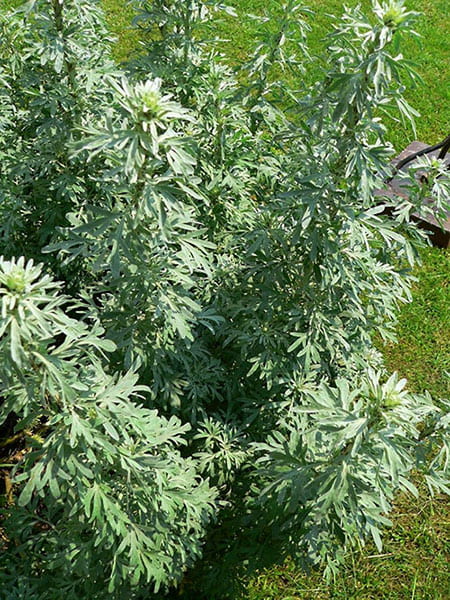The collaborative project taking shape just to the west of the Honors College on Newport Ave. was well attended, with students, faculty and guests from Lakefront Brewery and other community organizations taking a hand in planting seven trees along the western edge of what will eventually become the full-fledged garden. The trees included three whips (a medlar tree and two perry pear varieties) from Raintree Nursery in Washington state and four whips (two cider apple varieties and two mountain ash trees) from One Green World Nursery in Oregon.
A reporter from UWM campus news as well as the Milwaukee Journal Sentinel’s beer reporter, Kathy Flanigan, came to watch and help as the seven trees were given permanent homes; archaeologists from the Anthropology Department’s contract program on an afternoon break did most of the digging while a team of additional volunteers, including UWM’s Chief Sustainability Officer Kate Nelson and SARUP’s Cindy Anderson, whose 2016 Architecture class came up with the garden design, helped add compost, positioned the trees and added mulch to keep the roots from drying out over the summer. Students from the Fermentation Studies gateway course, FoodBev 102 “Taste”, taught for the first time this past spring, were also in attendance.
After the planting Bettina Arnold, Barry Cameron, Larry Kuiper, Pete Sands and Mike Darnell said a few words about the Hortus Academicus and plans for its future, which include a full-fledged fundraiser this coming fall and the design of a logo for the garden, possibly in collaboration with students from the Peck School of the Arts. In the meantime two raised beds, built by Robin Steinbrenner as part of his internship course in Spring 2017, will be positioned in the sunken courtyard and seedlings that will later be transplanted to their permanent homes will be grown there temporarily. One additional cider apple variety, Cox’s Orange Pippin, will eventually be planted when it becomes available.
The complete tree list was provided for interested folks who came to drink some of Barry Cameron’s Verdicchio wine and several varieties of unhopped ale and braggot based on archaeological evidence brewed by Bettina Arnold and Josh Driscoll during the Wisconsin Science Festival event in Fall 2016 and in the gateway class in Spring 2017. As of this writing (June 5, 2017), all the trees are alive and have new growth. The list of trees can be found below:
Raintree Nursery, Morton, WA
Pucio Super Mol Medlar
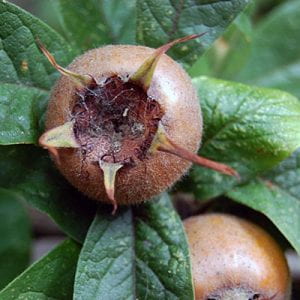 Although little known in the U.S., medlars have been grown in Europe for thousands of years. They are attractive small, self-fertile trees that grow to 10′ with healthy foliage, white flowers and unusual round fruits that are collected in the fall, after the first frosts. When picked, the fruits are much too hard to eat immediately. If allowed to ripen for a few weeks in a cool lighted place they undergo a process called ‘bletting’ and become soft, spicy and very rich, with a cinnamon-apple sauce flavor. Fruit is eaten raw or made into jelly.
Although little known in the U.S., medlars have been grown in Europe for thousands of years. They are attractive small, self-fertile trees that grow to 10′ with healthy foliage, white flowers and unusual round fruits that are collected in the fall, after the first frosts. When picked, the fruits are much too hard to eat immediately. If allowed to ripen for a few weeks in a cool lighted place they undergo a process called ‘bletting’ and become soft, spicy and very rich, with a cinnamon-apple sauce flavor. Fruit is eaten raw or made into jelly.
- Species: Mespilus germanicus
- Parentage: Unknown
- Originates from: Pucio Supermol variety comes from the piedmont area of Italy
Barnet Perry Pear
 A moderately vigorous heavy cropping variety, starting at an early age. Pears turbinate in shape with greenish yellow skin with an orange red flush. Russeted all over, which is an unusual feature of Perry pears. Harvest—early to mid-October and mill within 1-3 weeks of collecting. Fruits are easily shaken off tree when ripe. Produces a pleasant light perry. Passable as a dessert pear in spite of the astringency.
A moderately vigorous heavy cropping variety, starting at an early age. Pears turbinate in shape with greenish yellow skin with an orange red flush. Russeted all over, which is an unusual feature of Perry pears. Harvest—early to mid-October and mill within 1-3 weeks of collecting. Fruits are easily shaken off tree when ripe. Produces a pleasant light perry. Passable as a dessert pear in spite of the astringency.
- Species: Pyrus communis
- Parentage: Unknown
- Originates from: south of Gloucester, UK possibly in the mid-1800s
- Sweet/sharp
Butt Perry Pear
 An October ripening pear with moderate acids and tannins that produces fruity, slightly astringent of good quality. Fruit is small, yellow, slightly russetted with excellent keeping quality prior to milling. A vigorous tree with narrow-angled crotches.
An October ripening pear with moderate acids and tannins that produces fruity, slightly astringent of good quality. Fruit is small, yellow, slightly russetted with excellent keeping quality prior to milling. A vigorous tree with narrow-angled crotches.
- Species: Pyrus communis
- Parentage: Unknown
- Originates from: In the 1700s in Gloucestershire north of Gloucester at Norton
- Bitter/sharp
One Green World Nursery, Portland, OR
Amere de Berthcourt Cider Apple
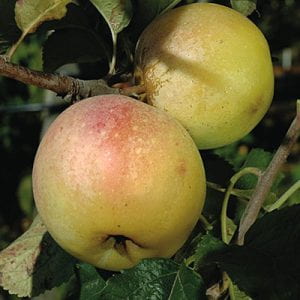 Prolific bittersweet cider apple with yellow fruit with a pink to red blush. Flesh is fine, sugary and slightly bitter perfumed. Great apple for alcoholic cider or for adding body to sweet cider.
Prolific bittersweet cider apple with yellow fruit with a pink to red blush. Flesh is fine, sugary and slightly bitter perfumed. Great apple for alcoholic cider or for adding body to sweet cider.
- Species: Malus domestica
- Parentage: Unknown
- Originates from: France
- Bitter/sweet
Ashmead’s Kernel Cider Apple
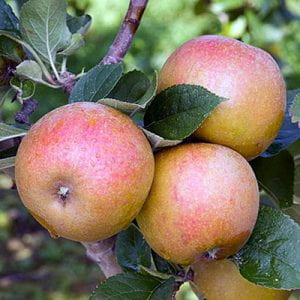 A very old apple variety with a drab appearance that belies a unique peardrop flavour. One of a very small number of English apple varieties that also thrives in North America.
A very old apple variety with a drab appearance that belies a unique peardrop flavour. One of a very small number of English apple varieties that also thrives in North America.
- Species: Malus domestica
- Parentage: Unknown
- Originates from: England, United Kingdom
- Introduced: 1700s
- Sweet/sharp
Ivan’s Beauty and Ivan’s Belle Mountain Ash
 Recent crosses between European mountain ash and chokeberry (aronia) that exhibit traits of both parents. Bred by Ivan Michurin, one of Russia’s most famous breeders. Grow as small trees like mountain ash with the leaves and fruit of its aronia parent. Can be used as supplements to cider, perry and mead.
Recent crosses between European mountain ash and chokeberry (aronia) that exhibit traits of both parents. Bred by Ivan Michurin, one of Russia’s most famous breeders. Grow as small trees like mountain ash with the leaves and fruit of its aronia parent. Can be used as supplements to cider, perry and mead.
- Species: Sorbus aucuparia x aronia; Sorbus aucuparia x crataegus
- Originates from: Russia
Hortus Academicus Plant List Used for Brewing and as Medicine
Anise Hyssop (Agastache foeniculum)
North American native perennial plant in the mint family. Related to the Old World hyssop, used in brewing in historic times. Anise hyssop was used medicinally by Native Americans for cough, fevers, wounds, diarrhea. The soft, anise-scented leaves are used as a seasoning, as a tea, in potpourri and can be crumbled in salad. The purple flower spike is favored by bees who make a light fragrant honey from the nectar. The leaves, flowers and stems can be used in brewing beer to impart a light licorice-like flavor.
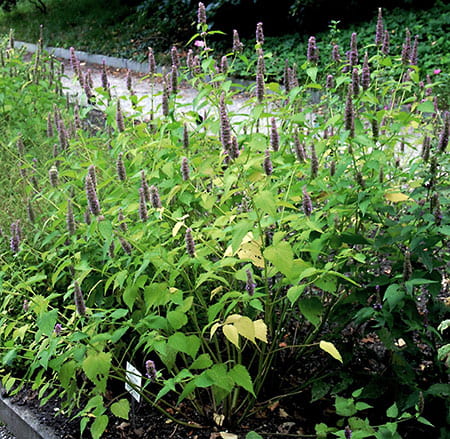
Betony (Stachys officinalis)
The Roman writer Pliny (25, 8, 46, § 84) calls the plant both betonica and vettonica, claiming that the Vettones (a Celtic tribe) used it as a herbal medicine. The word stachys comes from the Greek, meaning “an ear of grain,” and refers to the fact that the inflorescence is often a spike. The plant was commonly grown in physic gardens of apothecaries and monasteries for medicinal purposes and as an ingredient in gruit ales. It was used to make “Pistoia powder”, an old remedy for arthritis and gout. It was also claimed to be effective against snake and dog bites and was believed to be a cure for drunkenness. John Gerard (1597) said that “It maketh a man to pisse well,” while Nicholas Culpeper stated that, “…it preserves the liver and bodies of men from the danger of epidemical diseases, and from witchcraft also” and “…this is a precious herb, well worth keeping in your house.” Betony has also been used in traditional Austrian medicine internally as tea, or externally as compresses or baths for treatment of disorders of the respiratory tract, gastrointestinal tract, nervous system, skin and gynecological problems. Modern herbalists prescribe betony to anxiety, gallstones, heartburn, high blood pressure, migraine, neuralgia and to prevent sweating. It can also be used in ointment for cuts and sores.
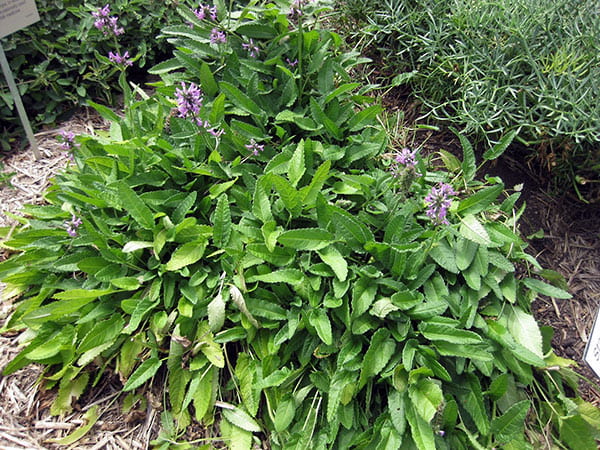
Meadowsweet (Filipendula ulmaria)
Meadowsweet is known by many other names. In Chaucer’s poem The Knight’s Tale it is known as meadwort and was one of the ingredients in a drink called “save”. It was also known as bridewort, because it was strewn in churches for festivals and weddings, and often made into bridal garlands. In Europe, it took its name “queen of the meadow” for the way it can dominate a low-lying, damp meadow. The name ulmaria means “elmlike”, possibly in reference to its individual leaves which resemble those of the elm (Ulmus). Like slipper elm bark, the plant contains salicylic acid, which has long been used as a painkiller. However, the generic name, Filipendula, comes from filum, meaning “thread” and pendulus, meaning “hanging”. This is said to describe the root tubers that hang characteristically on the genus, on fibrous roots.
The whole herb possesses a pleasant taste and flavor, the green parts having a similar aromatic character to the flowers, leading to the use of the plant as a strewing herb, strewn on floors to give the rooms a pleasant aroma, and its use to flavor wine, mead, beer and many vinegars. The flowers can be added to stewed fruit and jams, giving them a subtle almond flavor. It has many medicinal properties. The whole plant is a traditional remedy for an acidic stomach, and the fresh root is often used in homeopathic preparations. It is also a frequently used spice in Scandinavian varieties of mead and is archaeologically attested in honey-based alcoholic beverages as early as the Bronze Age in Europe and Anatolia.

Mint (Mentha spp.)
Mentha (also known as mint, from Greek μίνθα míntha, Linear B mi-ta) is a genus of plants in the mint family Lamiaceae. There are at least 65 genera and the exact distinction between species is unclear; it is estimated that 13 to 24 species exist. Hybridization between some of the species occurs naturally and many hybrids, as well as numerous cultivars are known. The genus is found across Europe, Africa, Asia, Australia, and North America. The species that makes up the genus Mentha are widely distributed and can be found in many environments. Most grow best in wet environments and moist soils. Mints will grow 10–120 cm tall and can spread over an indeterminate area. Due to their tendency to spread unchecked, some mints are considered invasive. The most common and popular mints for commercial cultivation are peppermint (Mentha piperita), native spearmint (Mentha spicata), Scotch spearmint (Mentha gracilis), and cornmint (Mentha arvensis); also (more recently) apple mint (Mentha suaveolens). Historically it was used as a room freshener, as a culinary herb, in tissanes for medicinal application and in aromatherapy today. Its use in mixed alcoholic beverages is attested in the archaeological record of prehistoric Europe, often in combination with a bittering agent such as meadowsweet.

Mugwort (Artemisia vulgaris)
Mugwort is the common name of several species of aromatic plants in the genus Artemesia. In Europe, mugwort most often refers to the species A. vulgaris, or common mugwort. The Anglo-Saxon Nine Herbs Charm mentions mucgwyrt. A folk etymology based on coincidental sounds derives mugwort from the word “mug”; more certainly, it has been used in flavoring alcoholic beverages at least since the early Iron Age. Other sources say mugwort is derived from the Old Norse muggi (meaning “marsh”) and Germanic wuertz (wort in English, originally meaning “root”), which refers to its use since ancient times to repel insects, especially moths. The Old English word for mugwort is mucgwyrt where mucg-, could be a variation of the Old English word for “midge”: mycg. Wort comes from the Old English wyrt (root/herb/plant), which is related to the Old High German wurz (root) and the Old Norse urt (plant). Wort is also the term used for the sugar extracted from grain used to make beer. Mugwort oil contains thujone, which is toxic in large amounts or under prolonged intake. The downy hairs on the underside of the leaves can be scraped off and used as effective tinder. All parts of the plant contain essential oils with all-purpose insecticidal properties (especially in the killing of insect larvae). Mugwort is a powerful plant that has been used therapeutically to relieve sleepiness.
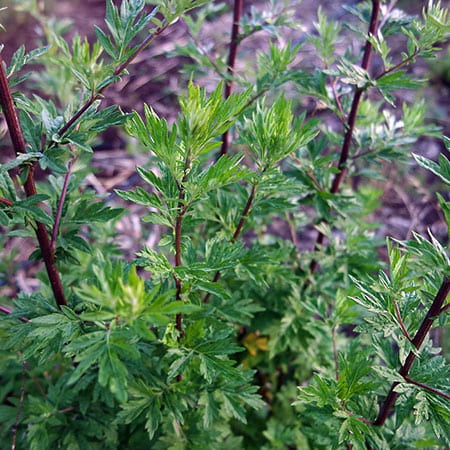
Pennyroyal (Mentha pulegium)
Pennyroyal is a flowering plant in the Lamiciaceae or mint family, native to Europe, North Africa and the Middle East. Crushed pennyroyal leaves emit a very strong fragrance similar to spearmint. Pennyroyal is a traditional folk remedy, emmenagogue, abortifacient and culinary herb, but is toxic to the liver, so caution is indicated in its application. Documented use of pennyroyal dates back to ancient Greek, Roman and Medieval times. Its name – although of uncertain etymology – is associated with Latin pulex (flea), alluding to the manner it was used to drive away fleas when smeared on the body. Pennyroyal was commonly incorporated as a cooking herb by the Greeks and Romans and likely also by prehistoric European peoples without writing. A large number of the recipes in the Roman cookbook of Apicius call for the use of pennyroyal, often along with such herbs as lovage, oregano and coriander. Although it was commonly used for cooking also in the Middle Ages, it gradually fell out of use as a culinary herb that was also used in brewing and is seldom used as such today.
Records from Greek and Roman physicians and scholars contain information pertaining to pennyroyal’s medicinal properties, as well as recipes used to prepared it. Pliny the Elder in the encyclopedia Naturalis Historia (Natural History) and the Roman physicians Galen and Oribasius described the plant as an emmenagogue while the Roman and Greek writers Quintus Serenus Sammonicus and Aspasia the Physician refer to it as an abortifacient, as does a medical text on gynecology attributed to Cleopatra but written by the female Greek physician Metrodora. Pennyroyal continued to be used up through the 20th and 21st centuries. Its oil is still commercially available today, though little is known about the appropriate dosages for humans.
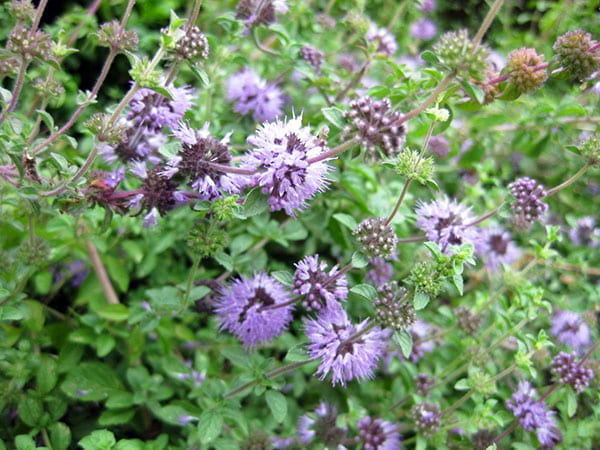
Sweet Gale or Bog Myrtle (Myrica gale)
Myrica gale is a species of flowering plant native to northern and western Europe and parts of northern North America. Common names include bog-myrtle, sweet willow, Dutch myrtle, and sweetgale. It is a deciduous shrub growing to 1–2 m tall. The flowers arecatkins, with male and female catkins on separate plants (dioecious). The fruit is a small drupe. It typically grows in acidic peat bogs, and to cope with these difficult nitrogen-poor growing conditions, the roots have nitrogen-fixing actinobacteria which enable the plants to grow.
The foliage has a sweet resinous scent reminiscent of juniper, the traditional flavoring for gin, and is a traditional insect repellent, used by campers to keep biting insects out of tents. It is also a traditional component of UK Royal Wedding bouquets and is used variously in perfumery and as a condiment. In northwestern Europe (Germany, Belgium and the Netherlands), it was much used in a mixture called gruit as a flavoring for beer from the Middle Ages to the 16th century, but it fell into disuse after hops supplanted gruit herbs for political and economic reasons. In modern times, some brewers have revisited this historic technique and in Denmark and Sweden the plant is commonly used to prepare home-flavored brandy.
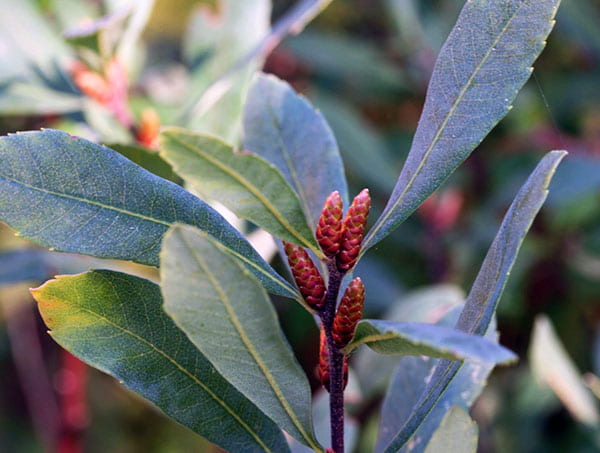
Tansy (Tanacetum vulgare)
Tansy is a perennial, herbaceous flowering plant of the aster family, native to temperate Europe and Asia. The roundish, flat-topped, button-like, yellow flower heads are produced in terminal clusters from mid-to-late summer. The scent is similar to that of camphor with hints of rosemary. The leaves and flowers are toxic if consumed in large quantities; the volatile oil contains toxic compounds including thujone, which can cause convulsions and liver and brain damage. The ancient Greeks may have been the first to cultivate it as a medicinal herb. In the 8th century AD it was grown in the herb gardens of Charlemagne and by Benedictine monks of the Swiss monastery of Saint Gall. It was used in brewing beer as a hops substitute in so-called gruit ales. A bitter tea made with tansy flowers has been used for centuries as an anthelmintic to treat parasitic worm infestations, and tansy cakes were traditionally eaten during Lent because it was believed that eating fish during Lent caused intestinal worms. According to liquor historian A. J. Baime, in the 19th century Tennessee whiskey magnate Jack Daniel enjoyed drinking his own whiskey with sugar and crushed tansy leaf. The volatile oils in the plant can cause contact dermatitis in sensitive individuals. Because it contains thujone, the U.S. FDA limits the use of tansy to alcoholic beverages, and the final product must be thujone-free.
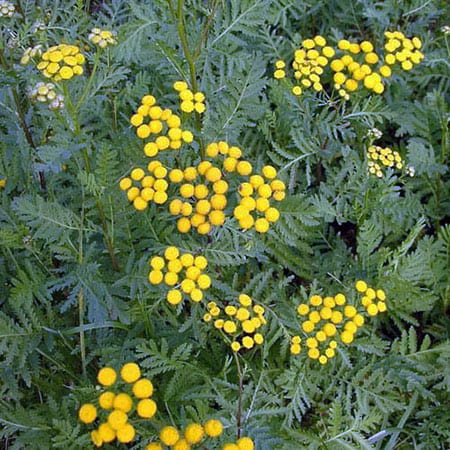
Thyme (Thymus vulgaris)
Common thyme is a bushy, woody-based evergreen subshrub in the mint family, related to oregano, with small, highly aromatic, grey-green leaves and clusters of purple or pink flowers in early summer. The ancient Egyptians used thyme for embalming while the ancient Greeks used it in their baths and burned it as incense in their temples. The spread of thyme throughout Europe was thought to be due to the Romans, as they used it to purify their rooms and to flavor cheese, wine and liqueurs. There is however good evidence for its use in flavoring alcoholic mixed beverages as well as mead-based drinks in prehistoric Europe as early as the Bronze Age. In the European Middle Ages, the herb was placed beneath pillows to aid sleep and ward off nightmares. In this period, women also often gave knights and warriors gifts that included thyme leaves, as it was believed to bring courage to the bearer. Thyme was also used as incense and placed on coffins during funerals, as it was supposed to assure passage into the next life. Oil of thyme, the essential of common thyme, contains 20–54% thymol, an antiseptic and an active ingredient in commercially produced mouthwashes like Listerine. Thyme essential oil also contains a range of additional compounds, such as p-cymene, myrcene, borneol, and linalool. Before the advent of modern antibiotics, oil of thyme was used to medicate bandages.

Wormwood (Artemisia absinthium)
Artemisia absinthium (wormwood, grand wormwood, absinthe, absinthium, absinthe wormwood) is a species of Artemisia native to temperate regions of Eurasia and Northern Africa and widely naturialized in Canada and the northern U.S. It is grown as an ornamental plant and is used as an ingredient in the spirit absinthe as well as some other alcoholic beverages, including bitters, vermouth and pelinkovac. As medicine, it is used for dyspepsia, as a bitter to counteract poor appetite, for various infectious diseases, Crohn’s disease, and IgA nephropathy. In the Middle Ages, wormwood was used to flavor mead and in Morocco it is used in a tea called sheeba. In 18th century England, wormwood was sometimes used instead of hops in beer and it is likely that it was used as a bittering agent in prehistoric beverages as well. Like many of the other bittering agents grown in the garden, wormwood contains thujones but medicinal extracts of wormwood have not been shown to cause seizure or other adverse effects at usual doses.
Artemisia comes from ancient Greek ἀρτεμισία, from Ἄρτεμις (Artemis), the goddess of the hunt and protector of the forest and children. Absinthum comes from the ancient Greek ἀψίνθιον, meaning “the same”. An alternative derivation is that the genus was named after Queen Artemisia who was the wife and sister of Mausolus ruler of Caria. When Mausolus died c. 353 BC, he was buried in a huge tomb dedicated to his memory – the Mausoleum at Halicarnassus, the ruins of which are still present at Bodrum in modern-day Turkey. The word “wormwood” comes from Middle English wormwode or wermode. Webster’s Third New International Dictionary attributes the etymology to Old English wermōd (compare with German wermut and the derived drink vermouth.
